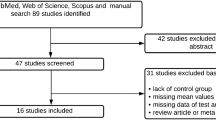Abstract
In vivo gene transfer to skeletal muscle is a promising strategy for the treatment of muscle disorders and for the systemic delivery of therapeutic proteins. Electrotransfer is a powerful method for DNA transfer into skeletal muscle. In view of the broad potential gene therapy clinical application of electrotransfer offers, it is important to perform toxicology studies on electrotransfered muscle tissue. We have investigated if the delivery of square wave electric pulses of low field strength and long duration to mouse tibial cranial muscle induced the expression of stress related genes. We have profiled gene expression patterns in muscles at different times after delivery of electric pulses using Stress/Toxicology microarrays. No significant variation in the expression of stress related-genes was detected between treated and non-treated muscles. This suggests that application of adequate, fine-tuned, electric pulses to the skeletal muscle is a non-toxic technique for gene therapy.
Similar content being viewed by others
References
Bachy M, Boudet F, Bureau M, et al. Electric pulses increase the immunogenicity of an influenza DNA vaccine injected intramuscularly in the mouse. Vaccine. 2001;19:1688–93.
Bettan M, Emmanuel F, Darteil R, et al. High-level protein secretion into blood circulation after electric pulse-mediated gene transfer into skeletal muscle. Mol Ther. 2000a;2:204–10.
Bettan M, Ivanov MA, Mir LM, Boissiere F, Delaere P, Scherman D. Efficient DNA electrotransfer into tumors. Bioelectrochemistry. 2000b;52:83–90.
Heller R, Jaroszeski M, Atkin A, et al. In vivo gene electroinjection and expression in rat liver. FEBS Lett. 1996;389:225–8.
Kreiss P, Bettan M, Crouzet J, Scherman D. Erythropoietin secretion and physiological effect in mouse after intramuscular plasmid DNA electrotransfer. J Gene Med. 1999;1:245–50.
Levy MY, Barron LG, Meyer KB, Szoka FC. Characterization of plasmid DNA transfer into mouse skeletal muscle: evaluation of uptake mechanism, expression and secretion of gene products into blood. Gene Ther. 1996;3:201–11.
Mallat Z, Besnard S, Duriez M, et al. Protective role of interleukin-10 in atherosclerosis. Circ Res. 1999;85:17–24.
Miller G, Steinbrecher RA, Murdock PJ, et al. Expression of factor VII by muscle cells in vitro and in vivo following direct gene transfer: modelling gene therapy for haemophilia. Gene Ther. 1995;2:736–42.
Mir LM, Bureau MF, Gehl J, et al. High-efficiency gene transfer into skeletal muscle mediated by electric pulses. Proc Natl Acad Sci USA. 1999;96:4262–7.
Mir LM, Bureau MF, Rangara R, Schwartz B, Scherman D. Long-term, high level in vivo gene expression after electric pulse-mediated gene transfer into skeletal muscle. CR Acad Sci III. 1998a;321:893–99.
Mir LM, Glass LF, Sersa G, et al. Effective treatment of cutaneous and subcutaneous malignant tumours by electrochemotherapy. Br J Cancer. 1998b;77:2336–42.
Montgomery DL, Ulmer JB, Donnelly JJ, Liu MA. DNA vaccines. Pharmacol Ther. 1997;74:195–205.
Naffakh N, Pinset C, Montarras D, et al. Long-term secretion of therapeutic proteins from genetically modified skeletal muscles. Hum Gene Ther. 1996;7:11–21.
Payen E, Bettan M, Rouyer-Fessard P, Beuzard Y, Scherman D. Improvement of mouse beta-thalassemia by electrotransfer of erythropoietin cDNA. Exp Hematol. 2001;29:295–300.
Pradat PF, Finiels F, Kennel P, et al. Partial prevention of cisplatin-induced neuropathy by electroporation-mediated nonviral gene transfer. Hum Gene Ther. 2001;12:367–75.
Prudhomme GJ. Gene therapy of autoimmune diseases with vectors encoding regulatory cytokines or inflammatory cytokine inhibitors. J Gene Med. 2000;2:222–32.
Ragot T, Vincent N, Chafey P, et al. Efficient adenovirus-mediated transfer of a human minidystrophin gene to skeletal muscle of mdx mice. Nature. 1993;361:647–50.
Rols MP, Delteil C, Golzio M, Dumond P, Cros S, Teissie J. In vivo electrically mediated protein and gene transfer in murine melanoma. Nat Biotechnol. 1998;16:168–71.
Satkauskas S, Bureau MF, Puc M, et al. Mechanisms of in vivo DNA electrotransfer: respective contributions of cell electropermeabilization and DNA electrophoresis. Mol Ther. 2002;5:133–40.
Silvestre JS, Mallat Z, Duriez M, et al. Antiangiogenic effect of interleukin-10 in ischemia-induced angiogenesis in mice hindlimb. Circ Res. 2000;87:448–52.
Tripathy SK, Svensson EC, Black HB, et al. Long-term expression of erythropoietin in the systemic circulation of mice after intramuscular injection of a plasmid DNA vector. Proc Natl Acad Sci USA. 1996;93:10876–80.
Vilquin JT, Kennel PF, Paturneau-Jouas M, et al. Electrotransfer of naked DNA in the skeletal muscles of animal models of muscular dystrophies. Gene Ther. 2001;8:1097–107.
Wolff J, Ludtke J, Acsadi G, Williams P, Jani A. Long-term persistence of plasmid DNA and foreign gene expression in mouse muscle. Hum Mol Genet. 1992;1:363–9.
Author information
Authors and Affiliations
Corresponding author
Rights and permissions
About this article
Cite this article
Rubenstrunk, A., Mahfoudi, A. & Scherman, D. Delivery of electric pulses for DNA electrotransfer to mouse muscle does not induce the expression of stress related genes. Cell Biol Toxicol 20, 25–31 (2004). https://doi.org/10.1023/B:CBTO.0000021079.69089.4f
Issue Date:
DOI: https://doi.org/10.1023/B:CBTO.0000021079.69089.4f




